India has no shortage of trees and many are native. This beautiful and large nation has a surface area of 1,269,219 square miles, making it the seventh-largest country in the world by area. Within this large space are dense forests, large mountain ranges, and many bodies of water. India also has a lot of biological diversity and for the most part, a tropical and warm climate. The country’s climate is perfect for growing many types of plants, likely why there are so many thriving native trees.
Although there are hundreds of native tree species, we are only going to cover seven in this article. Follow along to discover seven stunning trees native to India and fun facts about each.
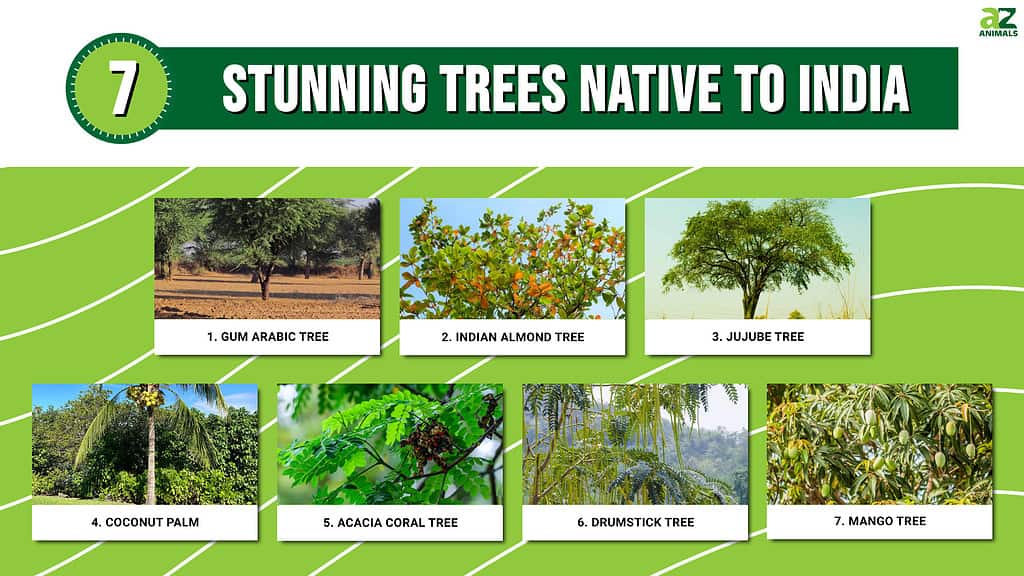
1. Gum Arabic Tree (Vachellia nilotica)
The gum Arabic tree is a tall tree sometimes called a “weed of national significance” that goes by many names. Some other common names for this plant are thorn mimosa, Egyptian acacia, babul, or thorny acacia. Although gum Arabic trees are common throughout the United States and Australia, this plant is native to Africa, the Middle East, and the Indian subcontinent.
These trees can easily reach 65 feet tall. The flowers are popular. They are bright yellow and bloom in spring. Gum Arabic trees have many uses. For instance, they used the gum of this tree for years in medicines, dyes, and paints. In India specifically, the plant is used in many dishes.
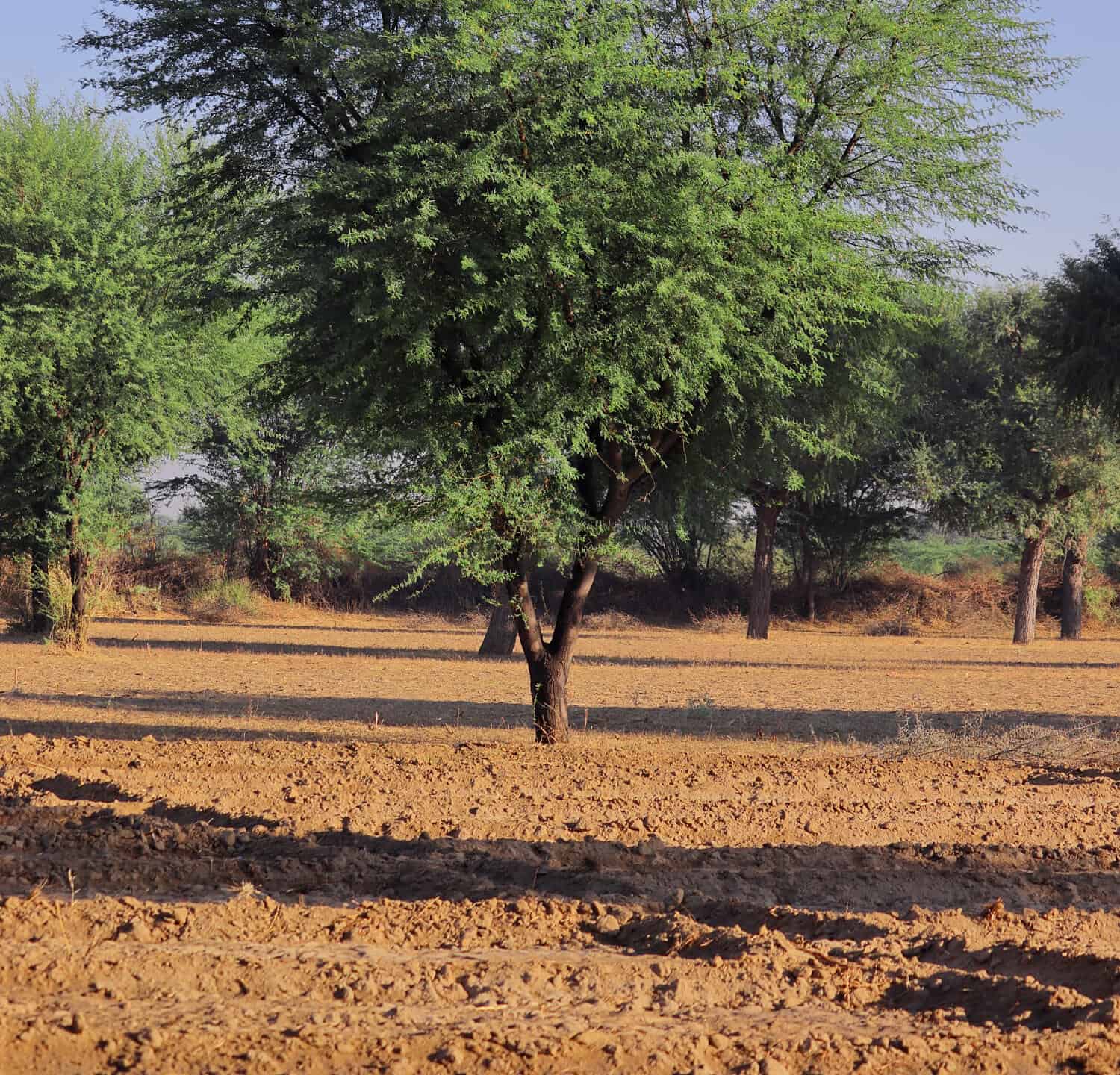
The gum of the gum Arabic tree has been used in medicines, dyes, and paints for years.
©manju seervi/Shutterstock.com
2. Indian Almond Tree (Terminalia catappa)
Indian almond trees are also known as the sea almond, tropical almond, false kamani, country almond, beach almond, and Malabar almond. This beautiful tree is native to Asia, Australia, the Pacific, Madagascar, and Seychelles. These trees have also been introduced to the Americas.
It can reach up to 115 feet and produces corky and light fruit. Interestingly, this tree changes with age. In older Indian almond trees, the crown is flatter, making the tree look vase-like. Indian almond trees have 6- to 10-inch long glossy dark green leaves and white to greenish distinct male and female flowers.
Indian almond trees are popular garden plants. The wood is sometimes cultivated for its redness. Previously, it was used in Polynesia for making canoes. The fruits hold an edible, almond-like kernel. It is highly acidic, however, and can stain cars, roads, and sidewalks.
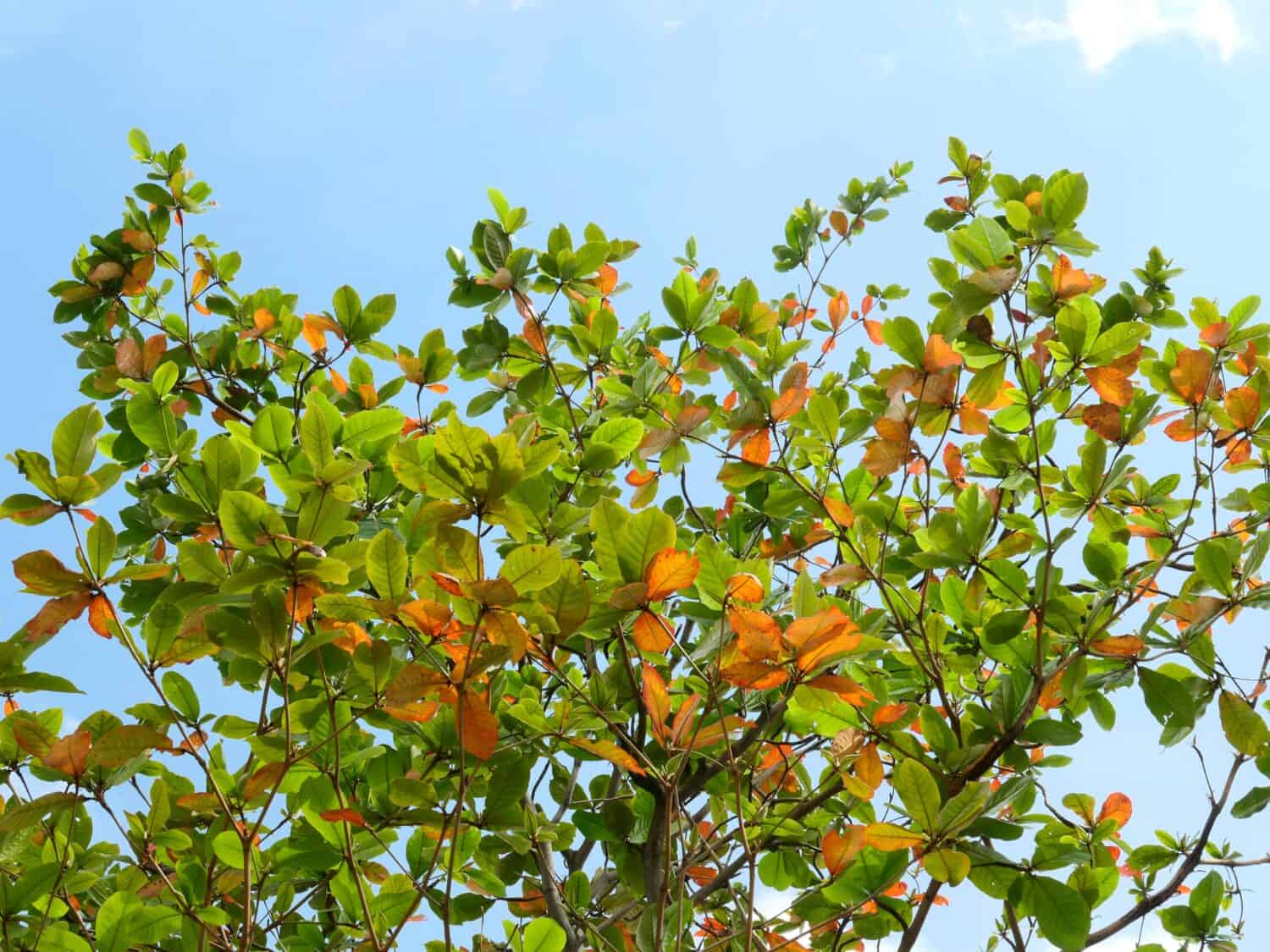
Indian almond trees are popular garden plants and can reach up to 115 feet.
©komkrit Preechachanwate/Shutterstock.com
3. Jujube Tree (Ziziphus mauritiana)
Next on our list of incredible trees native to India is the Jujube tree. These trees belong to the family Rhamnaceae. They can look like a short, but wide shrub or a medium-sized tree. Jujube tree leaves are short and the tree produces tiny, yellow, 5-petalled flowers. The branches are thorny and droop.
This tropical tree is large and grows delicious fruit sometimes called Chinese apples, Chinese dates, dunks, or Indian plums. In just three short years, the tree can fruit. These sweet fruits are soft and juicy and very popular in India. Some of the best-producing trees can yield more than 440 pounds of fruit every year.
While experts continue to debate the origin of this tree, it’s thought to be from the Indo-Malaysian region of South-East Asia. However, it’s been widely naturalized in many parts of the world including the Middle East, Australia, and the Pacific Islands. It also grows well in Pakistan, Bangladesh, and parts of Africa.
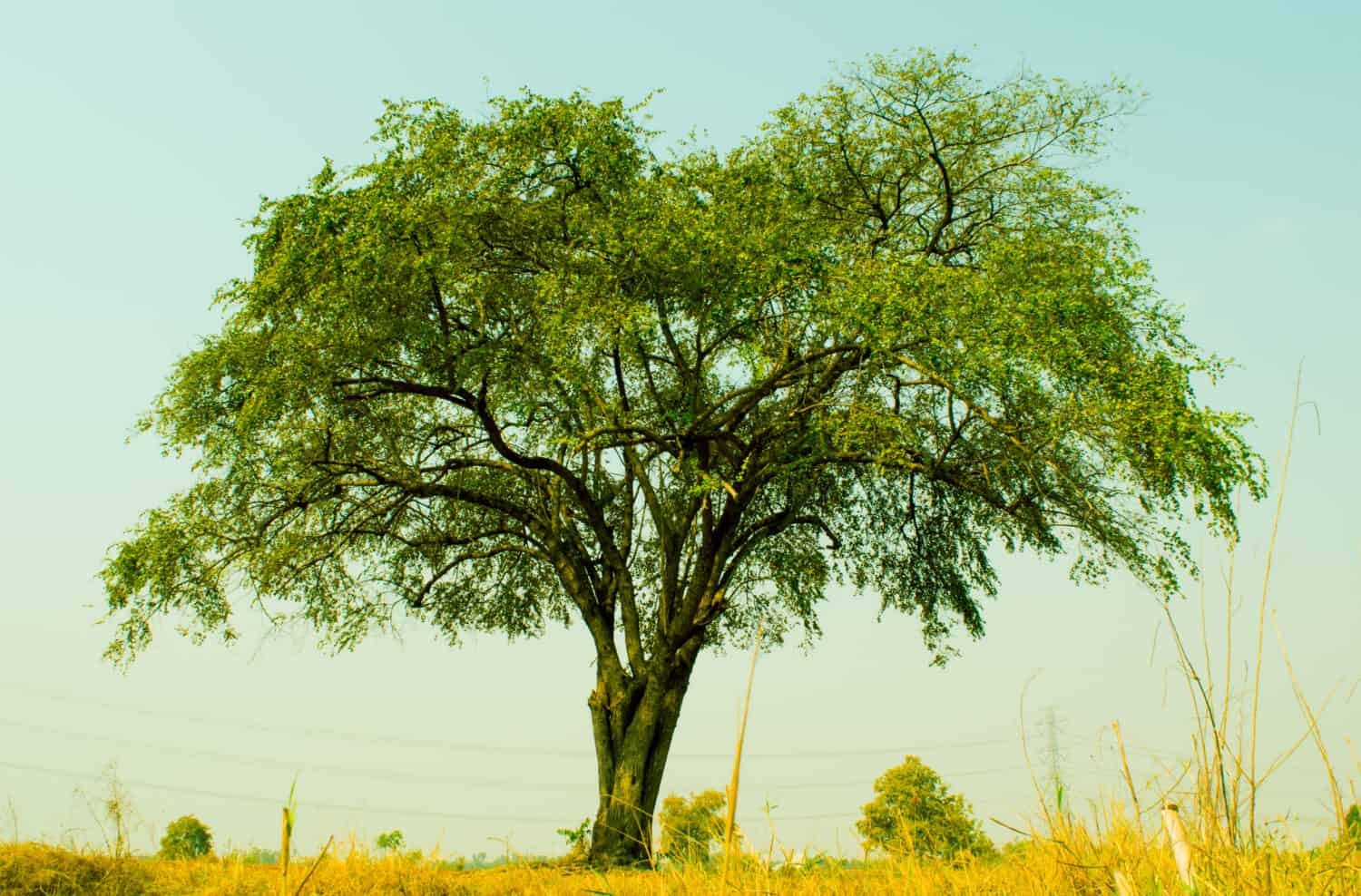
Jujube trees produce soft and juicy bright red-orange fruits.
©tnkorn yangaun/Shutterstock.com
4. Coconut Palm (Cocos nucifera)
Did you know that coconut palm trees are native to the Central Indo-Pacific region between western Southeast Asia and Melanesia? Coconut palms, though, thrive throughout the world in tropical areas and sandy beaches. Coconut trees are members of the palm tree family (Arecaceae) and have been around for millions of years. Some of the oldest fossil records estimate that a coconut-like plant grew in New Zealand about 15 million years ago.
Coconut palms are tall and can reach impressive heights of up to 100 feet. The leaves are also long, easily surpassing 13 feet. Coconut palms yield a lot of fruit, up to 75. However, it’s more common for mature coconut palm trees to produce about 30 fruit in a year.
While the word “coconut” has the word nut in it, the fruit is a drupe, not a true nut. It’s very nutritious and has an inedible hard outer shell. Coconuts have many uses. For example, the fleshy part of the seed, the coconut “meat” can be eaten raw or used as an ingredient in dishes. The husks and the shells are also used as a source of charcoal.
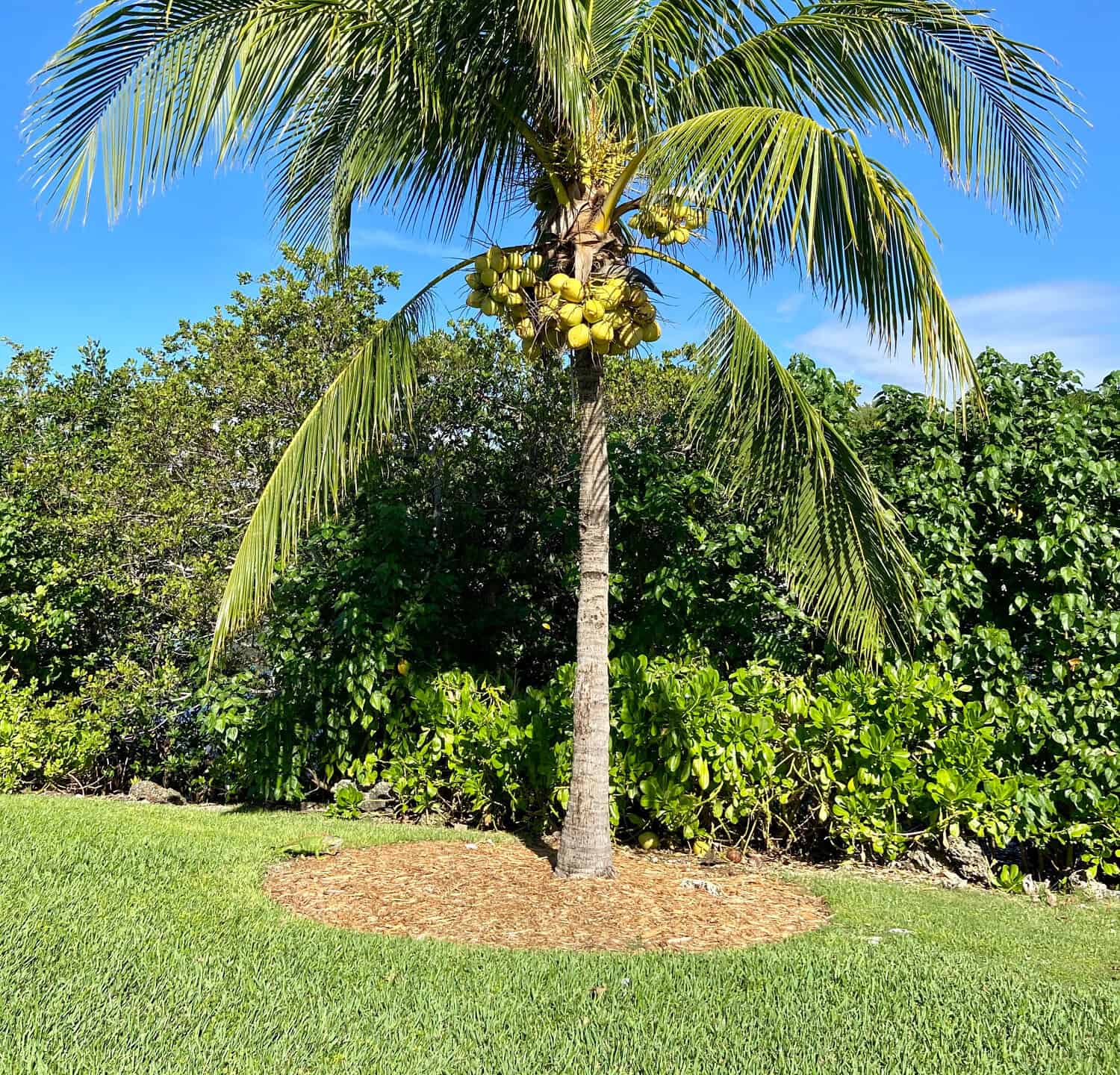
Coconut palms are unique trees that produce delicious coconuts with many uses.
©Roberto Pascual Gomez/Shutterstock.com
5. Acacia Coral Tree (Adenanthera pavonina)
The acacia coral tree has many names including coral wood and red bead tree. These trees are found in many countries like Brazil, the United States, Cuba, Puerto Rico, and Tobago, but it’s only native to parts of China and India.
The first recorded acacia coral tree was in India. This tree is beautiful and produces bunches of small yellow and white flowers. The seeds are bright red and are what most people recognize about this tree.
The tree is planted in gardens but is also sometimes used as a medicinal plant. Interestingly, the leaves are nutritious when young and cooked. While you can eat the red seeds cooked, they are toxic when raw. They have been used as red beads in jewelry for years. In China, these vibrant seeds have meaning. They are a symbol of love and in Chinese mean “mutual love bean.” For many years in India these red seeds were used as measurements of weight for fine gold.
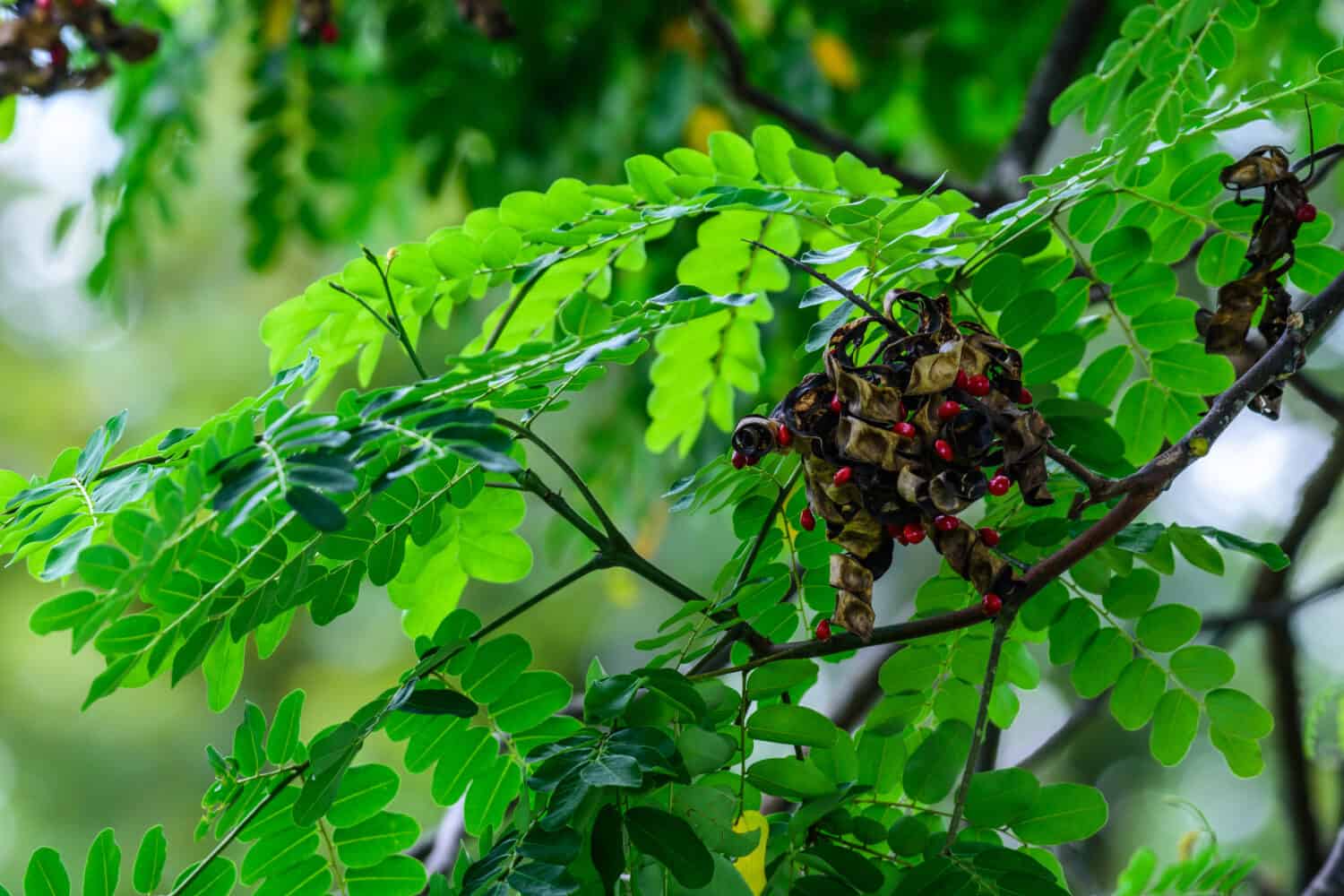
The acacia coral tree is known for its bright red seeds that can be used as beads and weights.
©pisitpong2017/Shutterstock.com
6. Drumstick Tree (Moringa oleifera)
Another native tree to India is the drumstick tree. It’s also commonly referred to as the moringa or horseradish tree. It’s a beautiful drought-resistant tree and a member of the family Moringaceae. This tree is common throughout the Indian subcontinent. Although it grows in other countries, it doesn’t pose a threat to native flora. The flower of this tree is easy to spot since it has five yellowish-white petals and is very fragrant.
From the flowers grow long dangling fruits that hold dark brown, globular seeds. The tree has many uses. For example, people cultivate and harvest young seeds and leaves. The immature seedpods are called drumsticks. They are cut, parboiled and then cooked into many dishes, especially curries. Apart from the seedpods, you can also eat the seeds, but they have a bitter flavor. Mature seeds also have ben oil because of their high concentration of behenic acid. Ben oil has been used for centuries and is currently used as a cosmetic oil.
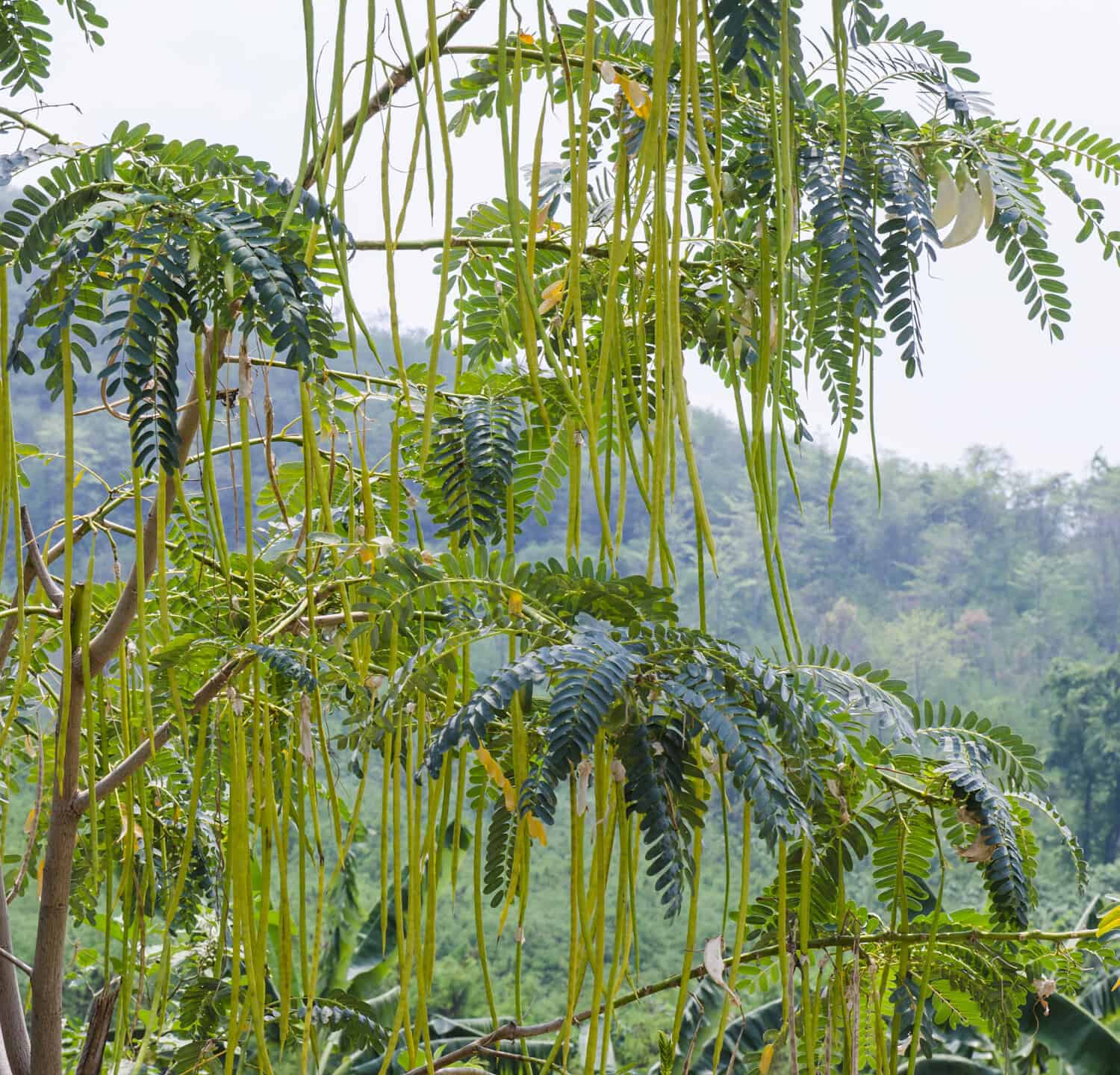
Drumstick trees have many edible parts including fruit pods, seeds, and leaves.
©hacksss/Shutterstock.com
7. Mango Tree (Mangifera indica)
Last but not least, mango trees are other trees native to India. While many people think of Caribbean islands when they think of mangos, these trees are native to India and Southeast Asia. There are two distinct genetic populations. In India alone, there are at least 500 varieties of mango. The trees are tall and grow wide, reaching up to 100 feet in length. These trees produce more fruit as they age. At the end of winter, large and vibrant red flowers form. In northern India, the earliest a mango tree flowers is in February.
These trees are found in warm regions all over the world because of domestication in southeastern Asia. While mango trees are tough, the wood is susceptible to fungi and damage from insects. While some musical instruments use mango tree timber as a material, the tree is best known for its fruits. Mango trees aren’t just delicious, but they have cultural significance in many places around the world. For example, this species is the national tree of Bangladesh and the national fruit of India.
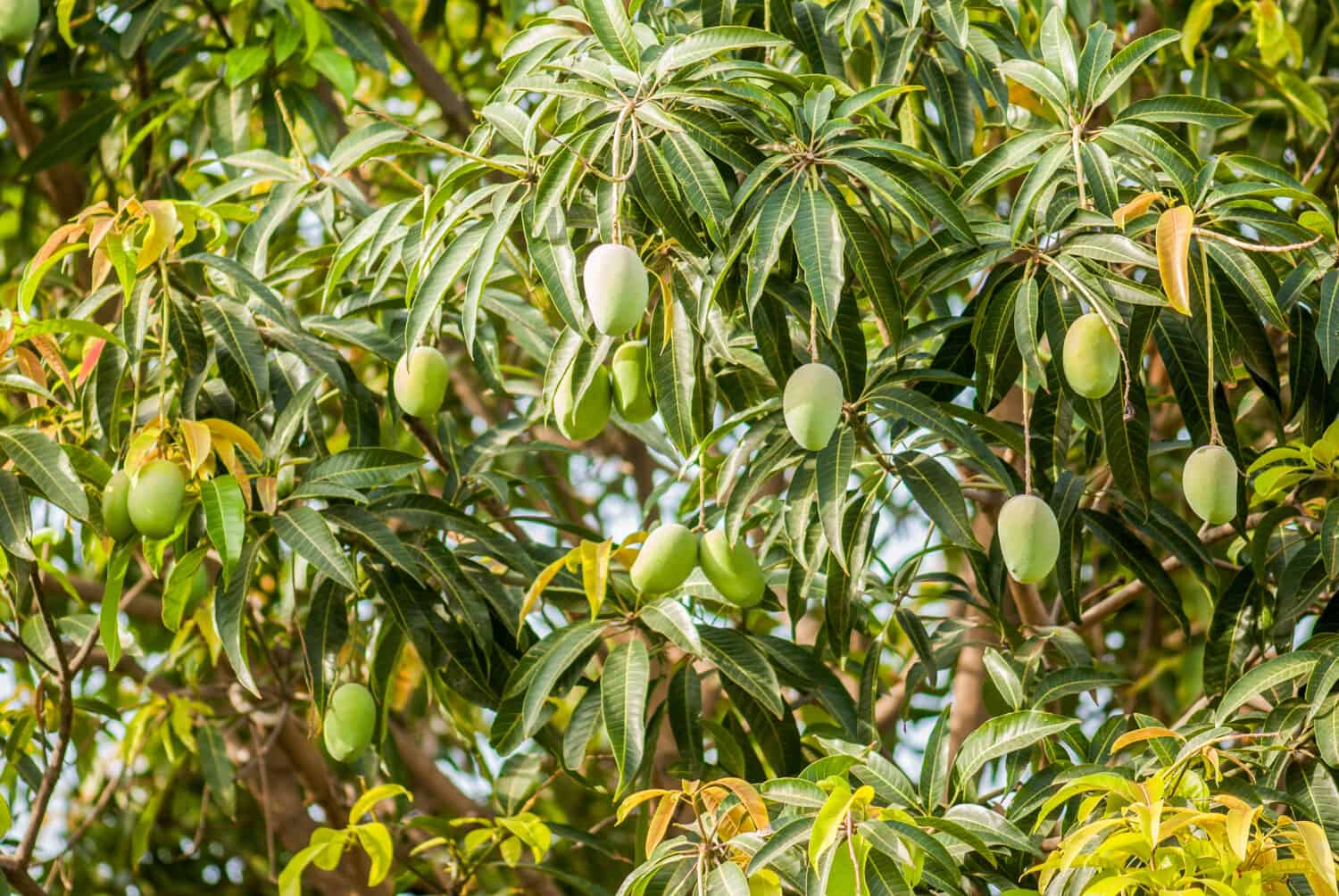
Mango trees are native to India, where alone there are at least 500 varieties.
©Tukaram.Karve/Shutterstock.com
Summary of 7 Stunning Trees Native to India
Here’s a recap of the seven trees native to India that we took a look at.
| Rank | Tree | Scientific Name |
|---|---|---|
| 1 | Gum Arabic Tree | Vachellia nilotica |
| 2 | Indian Almond Tree | Terminalia catappa |
| 3 | Jujube Tree | Ziziphus mauritiana |
| 4 | Coconut Palm | Cocos nucifera |
| 5 | Acacia Coral Tree | Adenanthera pavonina |
| 6 | Drumstick Tree | Moringa oleifera |
| 7 | Mango Tree | Mangifera indica |
The photo featured at the top of this post is © darksoul72/Shutterstock.com
Thank you for reading! Have some feedback for us? Contact the AZ Animals editorial team.






